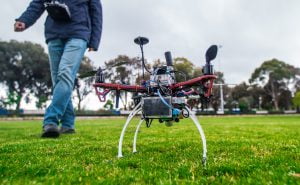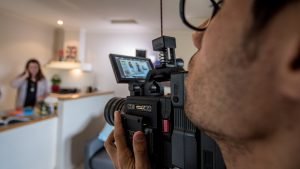The role of editing in video production: crafting the narrative.
Video production follows three important stages – pre-production, production, and post-production. While all stages are vital, post-production, which primarily includes editing, is crucial. Without editing, a mess is left. The role of an editor in video production is to ensure a smooth and organized flow of shots. Proper cutting, pacing of shots, and sound editing are some aspects that make a stunning film. In essence, without an editor’s input, the other aspects of video production cannot come together to create a masterpiece.
The Perfect Flow.
Have you ever watched a film with a perfect storyline, but the scenes felt disjointed and confusing? That’s where the importance of establishing a perfect flow comes into play. Establishing and preserving the flow is crucial for creating a film that engages and captivates the audience. When it comes to assembling shots, the role of an editor is pivotal. They work hand-in-hand with the director and cinematographer to create smooth transitions and harmonious pacing. In other words, they bring the vision to life. Cutting shots at the right time and timing transitions are part of an editor’s skillset for maintaining a consistent flow throughout the movie. All of which contribute to a final product that is sure to leave the audience awestruck.
Cutting Your Way to Success.
Cutting in video editing is not just about trimming off unnecessary footage. Timing is crucial in making cuts work for the film’s perfect flow. Making cuts at the right moment can make or break the pace of the film. Cut too soon and the abrupt stop messes up the momentum, cut too late and the shot drags on for too long. An editor needs to keep all the cuts smooth and elegant so that the film’s pace is controlled.
The pace of the film is significant because it affects the viewers’ engagement levels. The slower the pace, the less the audience’s attention, and vice versa. A good editor knows how to use cut timings to control the viewers’ engagement levels by dictating when the pace slows down or quickens up. When an editor nails the perfect flow with cuts, the content of the film becomes more engaging.
Switching Gears…or Scenes.
Transitions play a vital role in creating a smooth and seamless film. Without them, your scenes can become jumpy and disjointed, causing the audience to lose interest. The editor’s job is to control the pace of the film, and transitions are an essential tool in achieving this balance.
With the right transitions, an editor can guide the viewer from one scene to the next without disrupting the flow. They can also add to the overall tone of the film by selecting music, color grading, and other effects that complement the narrative.
Controlling the pace of the film is crucial in keeping the audience engaged. Too fast, and the viewer might get lost, too slow, and they might lose interest. A skilled editor can blend cuts and transitions to create the perfect pace that matches the intended mood or emotion of the film.
Overall, transitions are an important element in the post-production process. It might seem like a minor detail, but they can make all the difference in creating an engaging and impactful film.
The Forgotten One: Sound Editing.
When we talk about video editing, most people immediately think about cutting the visual parts of footage, but editing the visuals doesn’t mean that the audio flows together automatically. A good editor will be cognizant of the audio track as much as the video track, and in some situations, even more so. Being slightly off with audio timing, especially with dialogue, is even easier to pick up on than with the visual cut. Humans are excellent at discerning natural speech and thus it becomes the anchor holding a scene together.
This is especially true in video content outside of entertainment; such as with communication, educational, or marketable content. Adding in additional sound effects and music will also help fill up the awkward pauses or breaks between dialogue. These additions go further than just filling space however, as the audio by itself can direct the entire mood and atmosphere of a scene. Sound editing is so much more than just adjusting volumes, and can single-handedly make or break the emotional investment of your audience in your message.
Seamless Sound Editing.
When we talk about video editing, most people immediately think about cutting the visual parts of footage, but editing the visuals doesn’t mean that the audio flows together automatically. A good editor will be cognizant of the audio track as much as the video track, and in some situations, even more so. Being slightly off with audio timing, especially with dialogue, is even easier to pick up on than with the visual cut. Humans are excellent at discerning natural speech and thus it becomes the anchor holding a scene together.
This is especially true in video content outside of entertainment, such as with communication, educational, or marketable content. Adding in additional sound effects and music will also help fill up the awkward pauses or breaks between dialogue. These additions go further than just filling space, however, as the audio by itself can direct the entire mood and atmosphere of a scene.
But it’s not just about adding sound effects and music. Making sure that the sound is consistent throughout the scene can help maintain continuity. Imagine watching a video where the background noise is inconsistent, or where the volume fluctuates between dialogue and music. It can be jarring and take the viewer out of the moment. That’s why sound editing is so important in creating a seamless viewing experience.
As a video editor, keeping the big picture in mind is essential. Good video editing is not just about the visuals, but also about how the audio works together with the visuals to create a cohesive whole.
The final word.
In summary, video editing is a crucial aspect of video production, and all the other roles involved in video production are just as important. However, without an editor, the footage remains disorganized and fails to come together to create a masterpiece. The editor is responsible for achieving the perfect flow, adjusting timing, adding transitions, synchronizing audio clips, and controlling the pace of the film. The sound editing part of the film often goes overlooked, and it significantly contributes to setting the mood and evoking emotions from the audience. In conclusion, a well-edited video can help to educate, persuade, or inspire your audience.
More articles.

The rise of mobile video production: tips for success.
In recent years, the world of video production has undergone a transformative shift with the rise of mobile video production. The accessibility and convenience of

Video production ethics: responsibility and impact.
In today’s digital world, video production has become easily accessible to all. It is an exciting time with endless possibilities for creativity and expression. But

Video production on a budget: maximising resources.
Video production on a budget can be quite the challenge. As content needs grow, budgets often shrink or stay the same. Marketers find themselves at